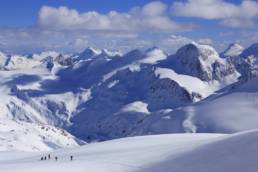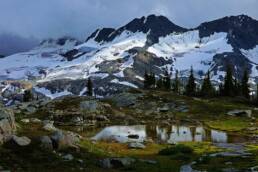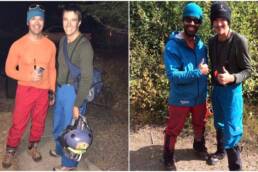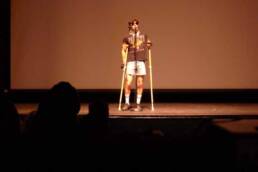Three years after an epic grunt along the length of the Selkirks, four British Columbia ski mountaineers lay claim to an equally arduous first-ever ski traverse of the neighbouring Purcells. Would they undertake the beautiful voyage again? Yaaa–probably not. Story and photographs by Douglas Noblet.
Photographer Douglas Noblet likes to suffer. In 2016, the Nelson, British Columbia, native helped organize a team to ski traverse the Selkirk Mountains, from Kootenay Pass to the Mica Dam, north of Revelstoke, British Columbia. During that 36-day, 520-kilometre (323-mile) trip, they endured unseasonably low snowpack, two broken skis, two broken bindings, three broken poles, and a wily pine marten that stole two kilograms of food. (You can read about that adventure in KMC Winter 2016/17.)

Despite the challenges of that trip, he and a core crew of four others decided to do another British Columbia traverse in April 2019, travelling from Creston to Golden, likely the first continuous ski trip along the entire length of the Purcell Mountain range. The team didn’t suffer any broken gear, and the snowpack was better than their mission three years earlier,
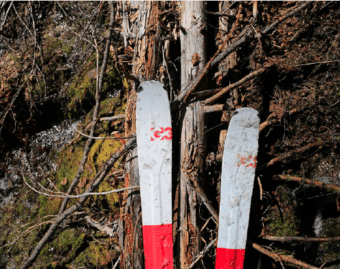
but given that it was April, spring hazards were high and they regularly triggered avalanches up to size 2.5. Thankfully, no one was hurt.
In all, the Purcells journey spanned 380 kilometres (236 miles) over 26 days and included 31,000 metres of vertical. “People often ask me if I would do the trip again, and the answer is an easy, no!” says Noblet. “But on the walk down Quarts Creek, myself and Steve [fellow Nelsonite Stephen Senecal] found ourselves talking about the Monashee traverse. Give us a season or two off and you might just see us attempting the next mountain range.”
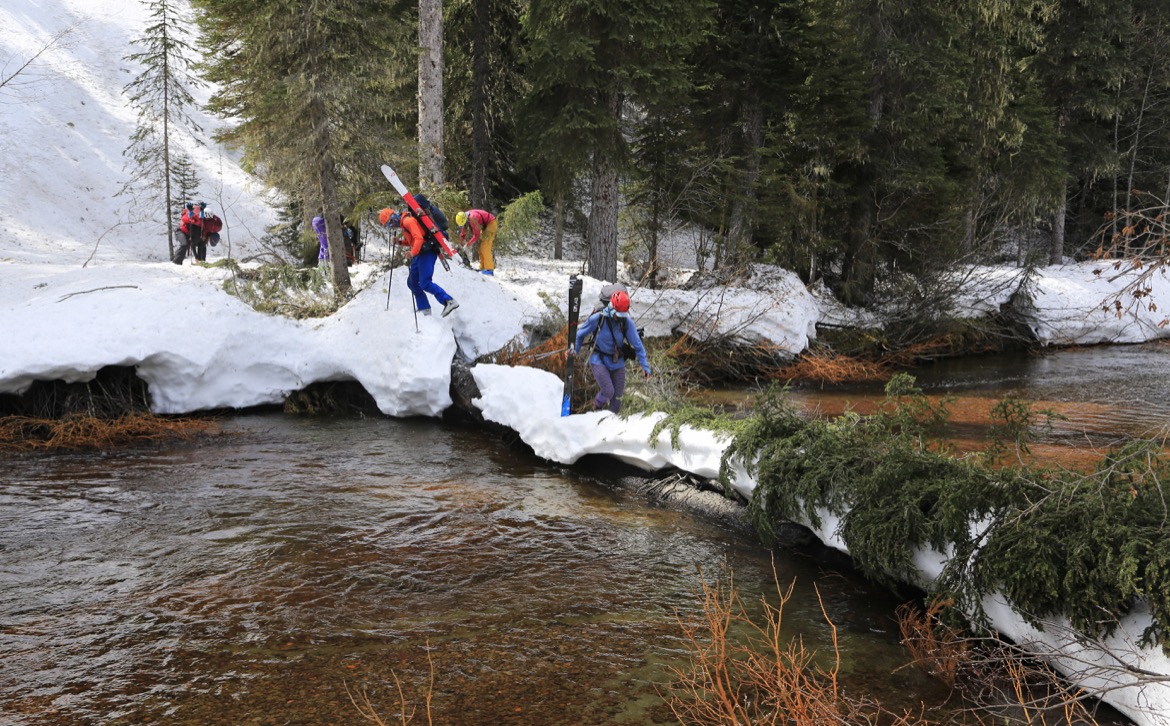
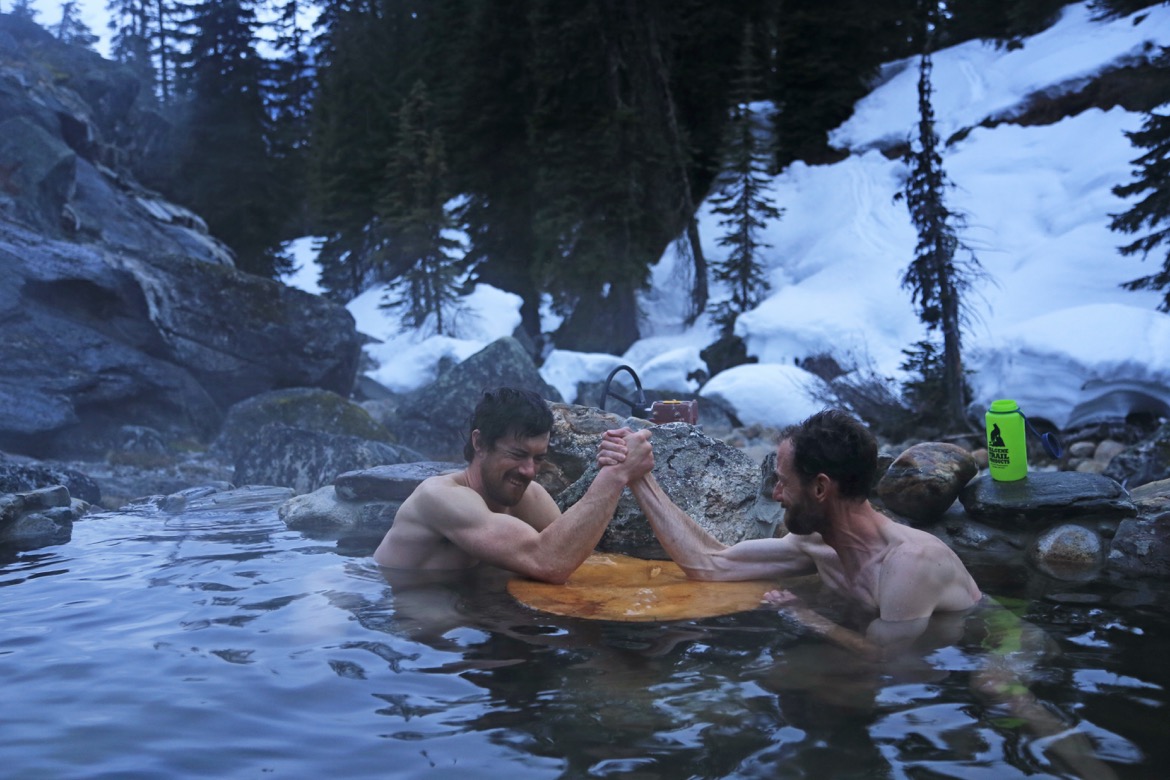
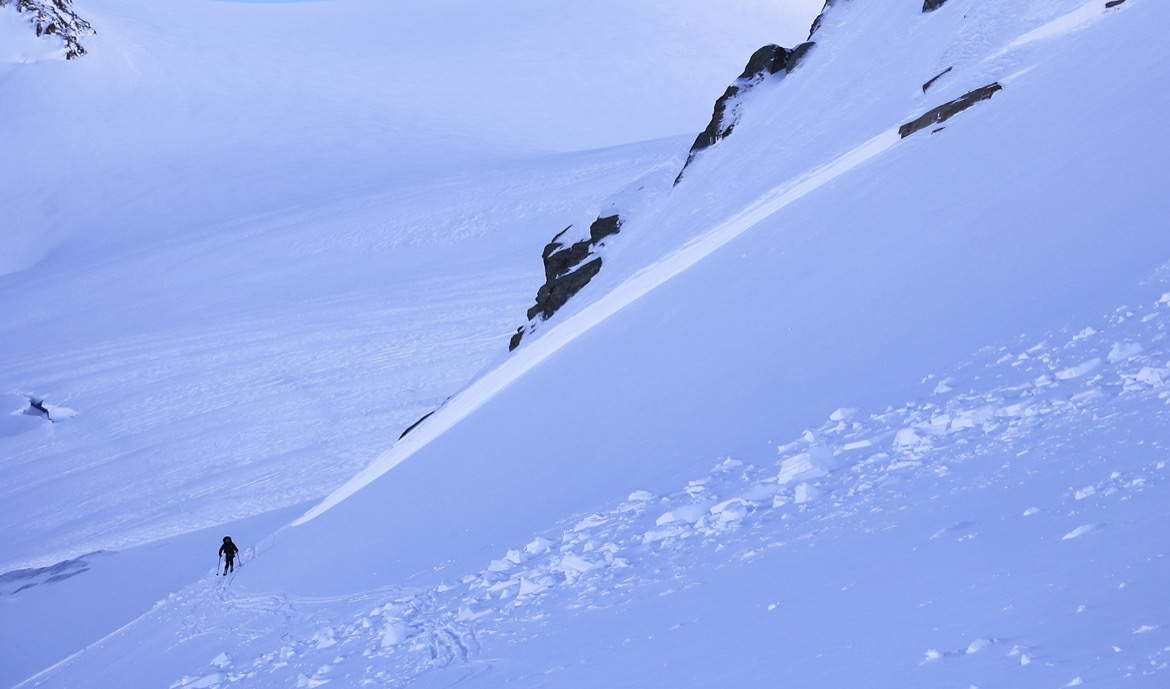
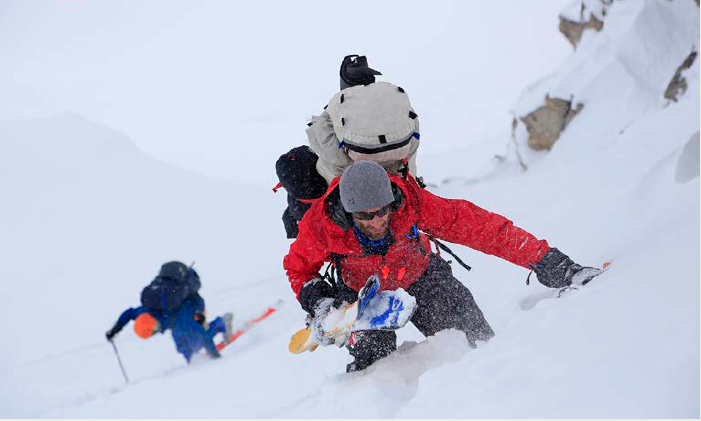
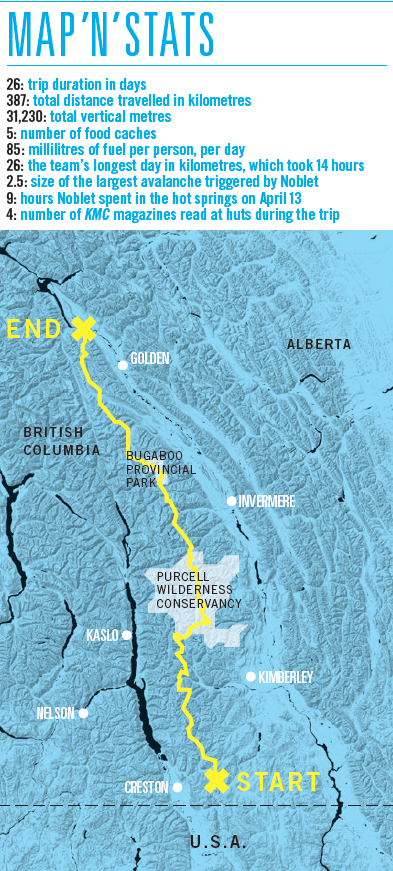

Related Stories
Water Gallery
Check out this unreal spread for our Summer Gallery. Both shots are from the one and only, Ryan Creary.
The Waddington Divide Traverse – A Photo Gallery
This past Spring, four backcountry skiers travelled the Waddington Divide Traverse, from Bluff Lake (about 250km…
Kimberely Duo Planning a Summer Traverse of the Purcells
Two men from Kimberley, British Columbia, plan to traverse the entire Purcell mountain range on foot. They expect to…
Duo Complete 1st Summer Traverse of the Purcells by Foot
Two men from Kimberley, British Columbia, have successfully traversed the entire Purcell mountain range on foot. They…
Nicolas Teichrob Deep Winter 2014 Show
Deep Winter 2014 slideshow by Nicolas Teichrob from Dendrite Studios on Vimeo. Check out the second place slideshow…


